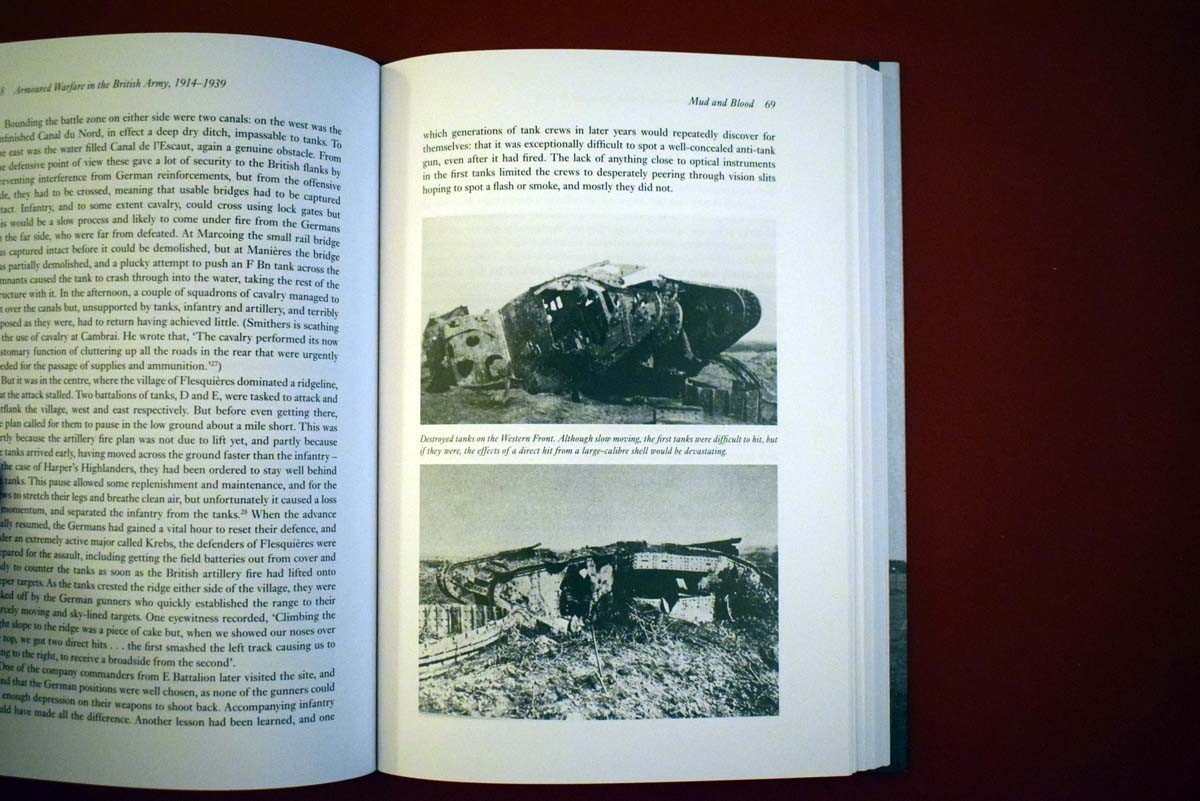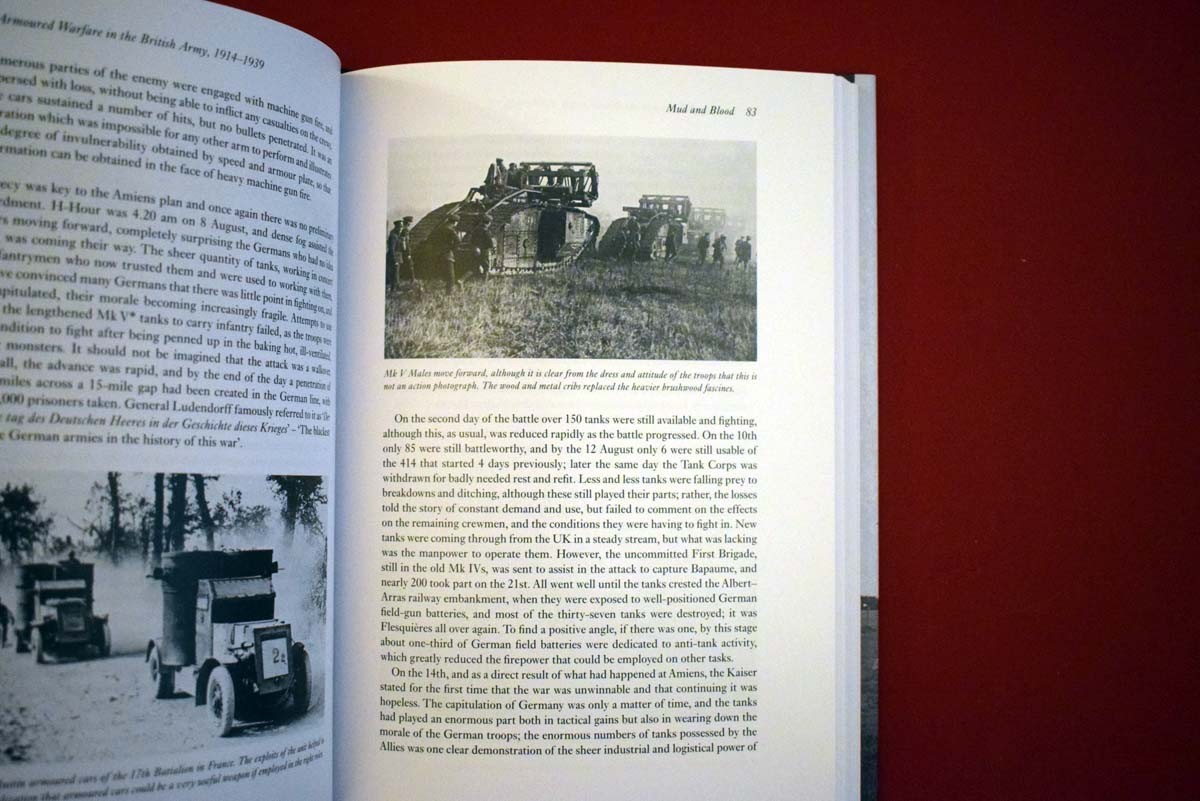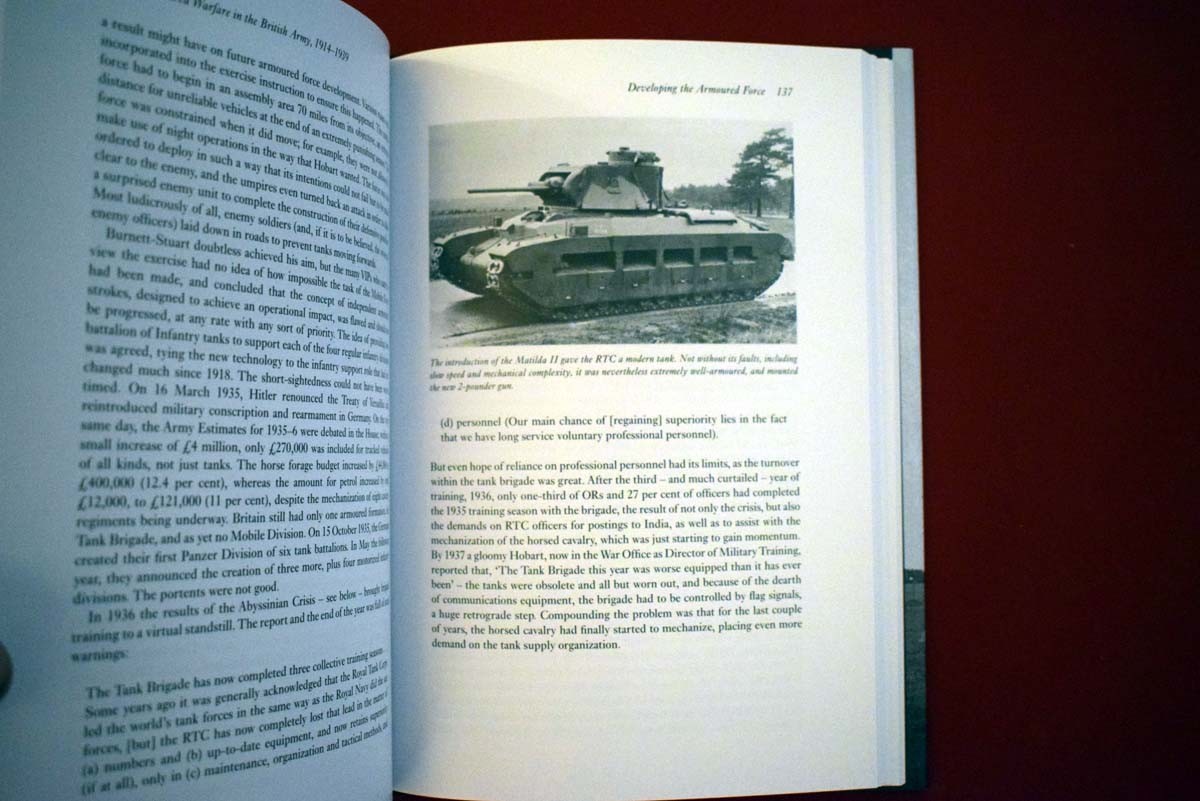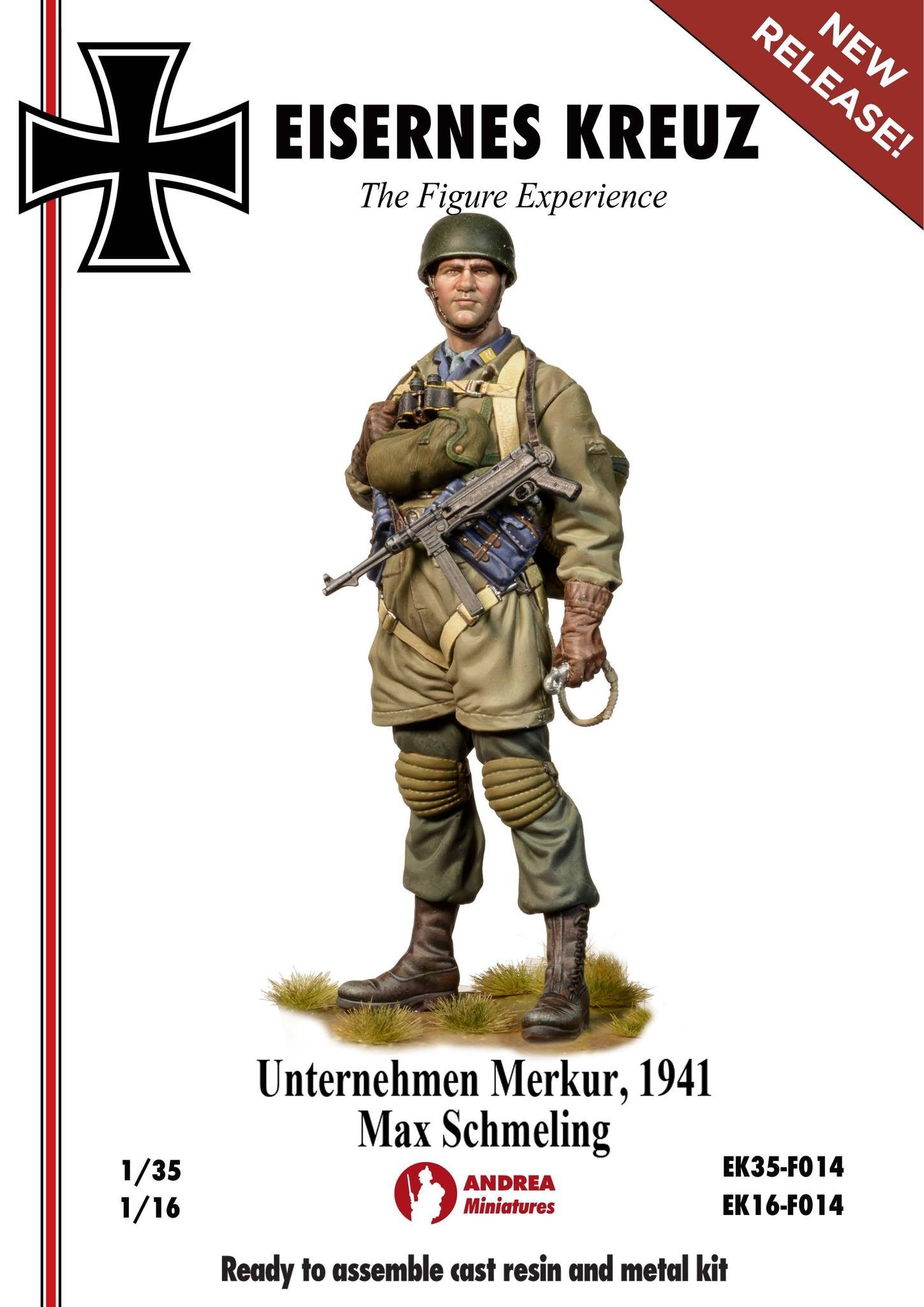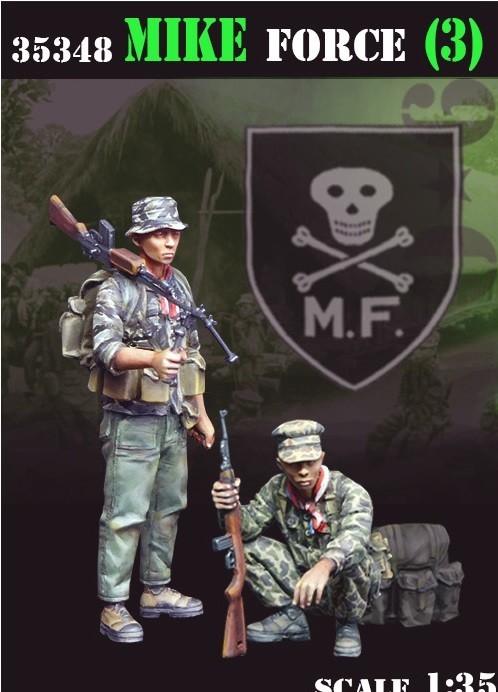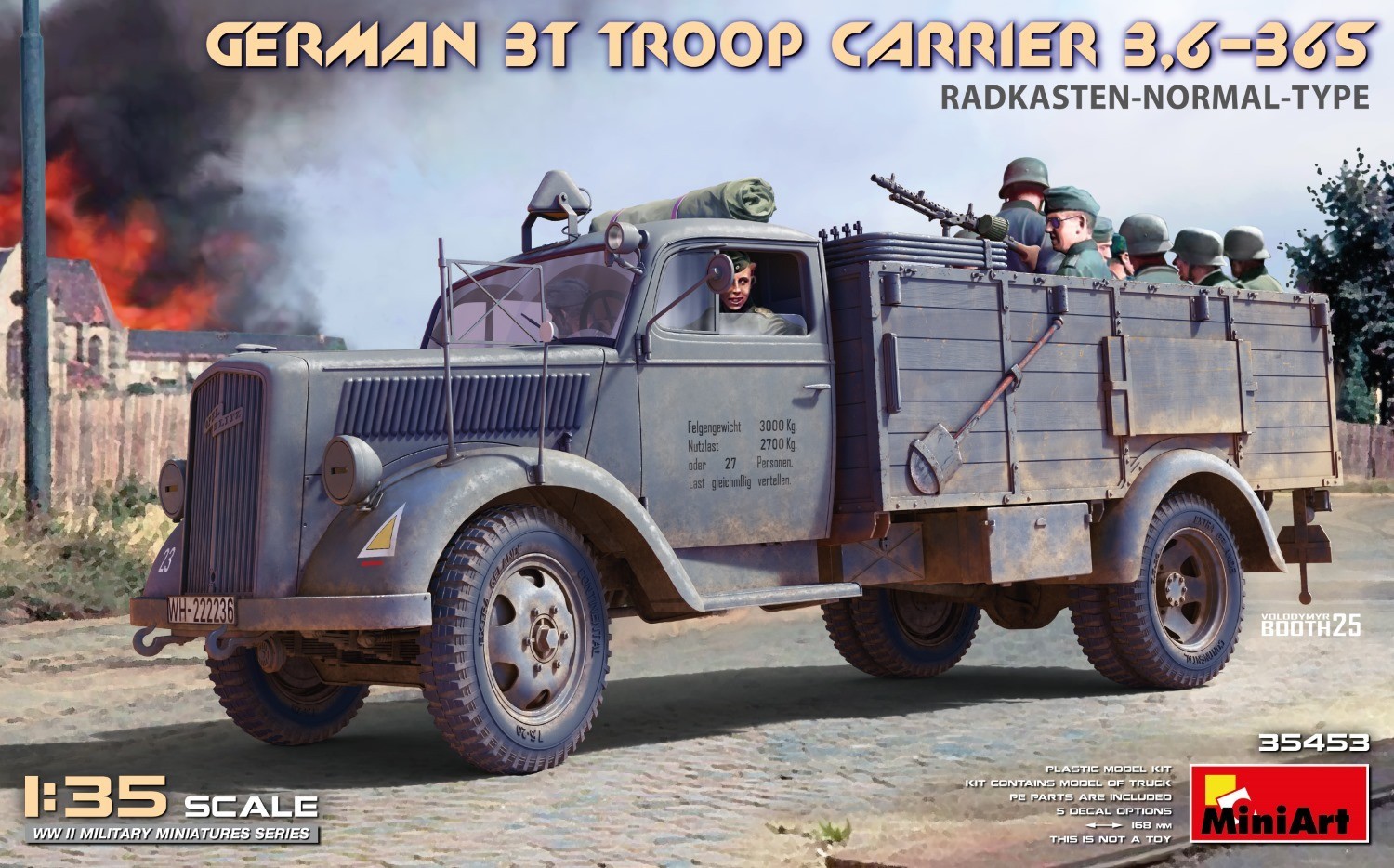
Introduction
The following introduction is taken from the Pen and Sword website:
This is the first volume in a three-volume illustrated history of the evolution of armoured manoeuvre warfare in the British army, covering the period from 1914 until 1939. Author Dick Taylor’s tour de force covers the evolution of the tank and armoured cars in response to the specific conditions created by trench warfare, the history of the use of tanks during the war, as well as the critical period between the wars in which the tank was both refined and neglected. He also looks in detail at the amalgamations and mechanization of the horsed cavalry which led to the formation of the Royal Armoured Corps in 1939.
His detailed and absorbing narrative covers the social and human aspects of the story as well as the technology, and explains how the nation that invented and first fielded the tank in 1916 struggled to maintain the lead after the Armistice.
Review
This offering from Pen and Sword is authored by Dick Taylor, with a forward introduction by David Willey who is the curator of Bovington Tank Museum. This is a hard backed book of 248 pages of a good quality heavy silk paper. The cost of this release is listed at £25, but can usually be located for less than that at £20 on the Pen and Sword website. The contents of this book are covered over eight chapters, with various sub-headers amongst the chapters.
Chapter 1 Origins
Chapter 2 The First Tank
Chapter 3 Mud and Blood
Chapter 4 Aftermath
Chapter 5 Fighting for Survival
Chapter 6 Developing the Armoured Force
Chapter 7 The Modernisation of the Cavalry
Chapter 8 The Birth of the Royal Armoured Corps
This book is I am told part one of three books that will cover the British Army, and its engagement in armoured warfare from World War I through to the present day. This particular release covers the British Armies involvement from the start of World War I to the start of World War II. This book begins with an introduction to the first armoured vehicles used in combat not by the British Army but by the Royal Navy, who added armour plate to some civilian vehicles and also added machine guns. It is rather surprising that the tank ever came into being with the nay sayers who were having input into stopping progression, Cavalry officers particularly hated losing their horses for machines.
The book as a whole covers an interesting period of tank use and design, as it is the early use of armoured vehicles and the results obtained that affected progression of the tank as regards design. The British with their slow tanks, that as a rule were heavily armoured and considered primarily as infantry support vehicles - something that continued into World War II with tanks such as the Churchill, and I would consider the French to have developed far better machines than the British during the inter-war period.
This book covers it all from the early armoured cars through to the tanks available at the start of World War II with in my opinion one of the best tanks taking everything into consideration in the form of the Matilda. The tank itself is looked at in its various combat situations during WWI, that assess the tank via its strength and weaknesses, and what it could and could not do on the battlefield. It also touched upon the difficulties of joint operations between the infantry and an all new weapon of war, with the use of the tank not fully understood by the infantry on the ground, which reading between the lines can so easily snatch defeat from victory.
Throughout the book, there is a liberal number of period photographs showing many of the vehicles the British army had in the inter war years to the start of WWII. These areas also cover the idea of the cruiser tank and its role in warfare. The Rhomboid tanks used during the First World War shows the effects of artillery fire upon them in clear detail. Captions for the photographs are provided, with Dick Taylor having done a good job of providing relevant information.
Conclusion
This offering from Pen and Sword by Dick Taylor does a good job of covering the introduction of the tank and armoured warfare, despite the limitations of the page count. The presentation of the information to me invites the reader to consider the detail provided and in my case, think what I would do differently. But what needs to be considered here, is that we are presented with a book looking at a completely new weapons system that was brought into production for a very specific purpose of breaking the stalemate of trench warfare and its use by the British up to the start of WWII.
